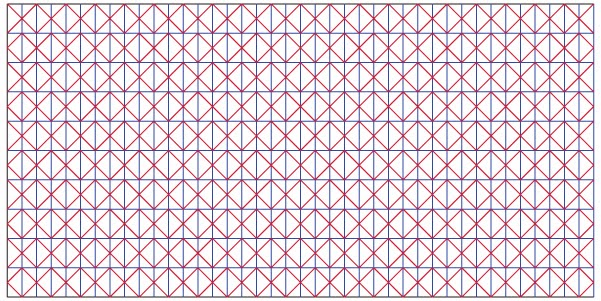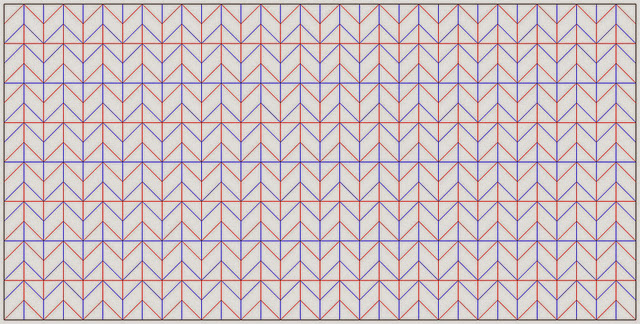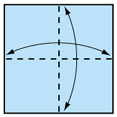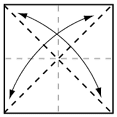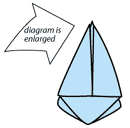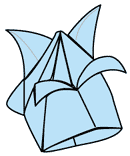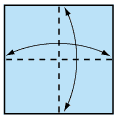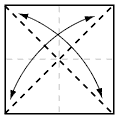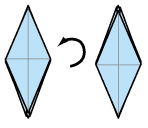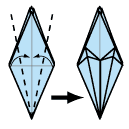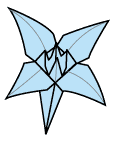This Origami for Kids section is especially designed for beginners. For a child who has never done origami before, it will take some time before he gets used to the process. Once he has experienced the joy of origami, he will eagerly decipher the origami instructions (called diagrams) by himself.
A child as young as 4 years old can fold paper if an adult sits beside him and coaches him along.
At 8 years old, a child who is familiar with origami can follow origami instructions independently. He may need help at the challenging steps so be sure that you are available when he needs you. Photo: "Mette Unit 1" by 8 year old child.
If you are an educator and want to teach origami for kids, consider the age guidelines below. Photo: swans by 4th graders, L. Surber. Read more about this kind of paper folding here.
- Kindergartners: you can teach 2 or 3 cooperative kindergartners at the same time. Choose very simple models that produce recognizable models such as animals.
- First Graders: it is most effective to teach in small groups of 4 or 5 children. You can teach the entire class at the same time, but you must be flexible and understand that some kids will not follow instructions and end up with their own creations. Again, choose easy models first, and if the class is receptive to this art form, then progress to harder models.
- Second Graders: by second grade, you can definately teach the entire class at the same time. Show them how the finished model will look like so that they have an incentive to follow along in the folding sequence.
- Third Graders and up: at this age, you can teach beyond the traditional origami models. Modular origami is great for teaching math and dollar-bill origami is great to make as presents for Father's Day

Watching a child’s eyes light up when he completes an origami for kids model
is priceless! However, teaching children how to do origami is not as easy as falling off a log. Prepare yourself with these tips to ensure a successful paper folding session.
